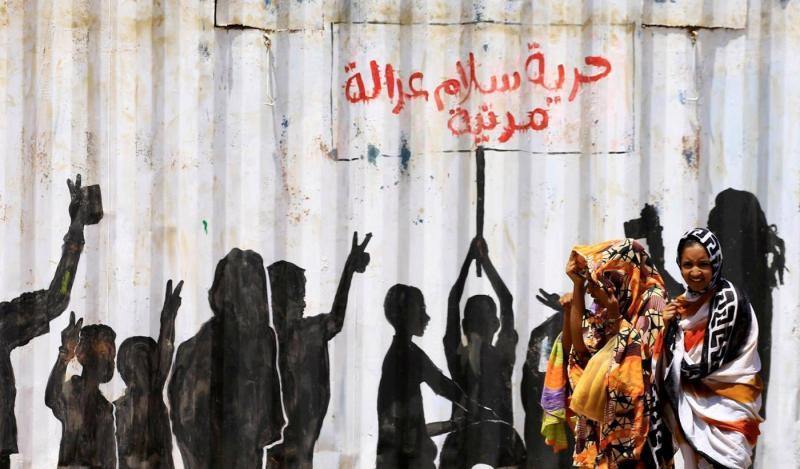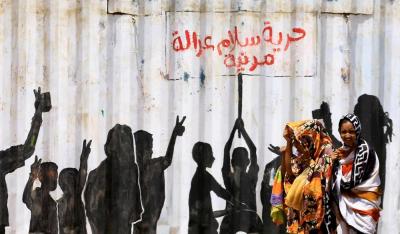Like many residents of the Sudanese capital, painter Yasmin Abdullah had to leave behind many belongings, including most of her artwork, when she fled the country due to the war. She stated, "I had to give up many things and leave without knowing when I would return, or if the things I left would still be there when I come back." She added, "About 20 pieces of art, years of artistic experience, sketches, paintings—everything, literally."
The conflict between the warring factions has swept over Khartoum since April 15, and has trapped civilians due to airstrikes, ground battles, and theft. Yasmin is part of an art scene driven by youth, which gained momentum from the popular uprising against former president Omar al-Bashir, only to dissipate four years later due to the war.
The Sudanese artist is now nine months pregnant, making her stay in a city experiencing power outages and a collapse of health services extremely difficult. She said, "The health center near my home was bombed on the same day I was scheduled for a routine check-up. At that moment, my husband and I realized it wasn’t safe to stay there." Yasmin and her husband now reside in Shendi, 150 kilometers north of Khartoum, where she plans to give birth before leaving Sudan.
The art scene in the country gained momentum with the 2019 uprising. Cultural and social activities were heavily censored during Bashir's rule. When he was ousted in 2019, the country witnessed a cultural uprising characterized by street murals and the spread of contemporary music. Rahim Shadad (28), who co-founded the Downtown Gallery in Khartoum in 2019, said, "We have always faced repression, especially during Bashir’s era... Artists were forced to stay within these bubbles, and they emitted silent cries."
He added, "The revolution changed everything, but it mostly led to the emergence of a new generation of artists." The war threatens to destroy the artworks. Shadad’s gallery has managed to raise a little over $8,500 of the $30,000 needed to support artists financially during the war.
Mohammed Youssef, one of 70 individuals receiving assistance from the gallery, refuses to leave his studio in Omdurman, where he grew up. He said, "I play my own role as an innovator, and I also have my own message as a community pioneer, from this standpoint I wish to create."
Meanwhile, other artists have gone their separate ways. Khalid Abdul Rahman, known for his adorned paintings depicting neighborhoods of Khartoum, spent a few days in the city center when the war broke out before relocating his family to the southern suburbs of the capital. He then moved to Wadi Halfa, 30 kilometers from the Egyptian border, hoping to cross it in the coming weeks. He stated, "I need a visa to Egypt so I can work again."
Painter and retired art professor Salah Abdel Hai fled with his wife and two daughters to Egypt. Before leaving Sudan, he removed some paintings from their frames and took them to Cairo, but left larger works behind. He said, "We fear for all the heritage, beautiful arts, and music in Sudan, for everything. These people can destroy everything."




